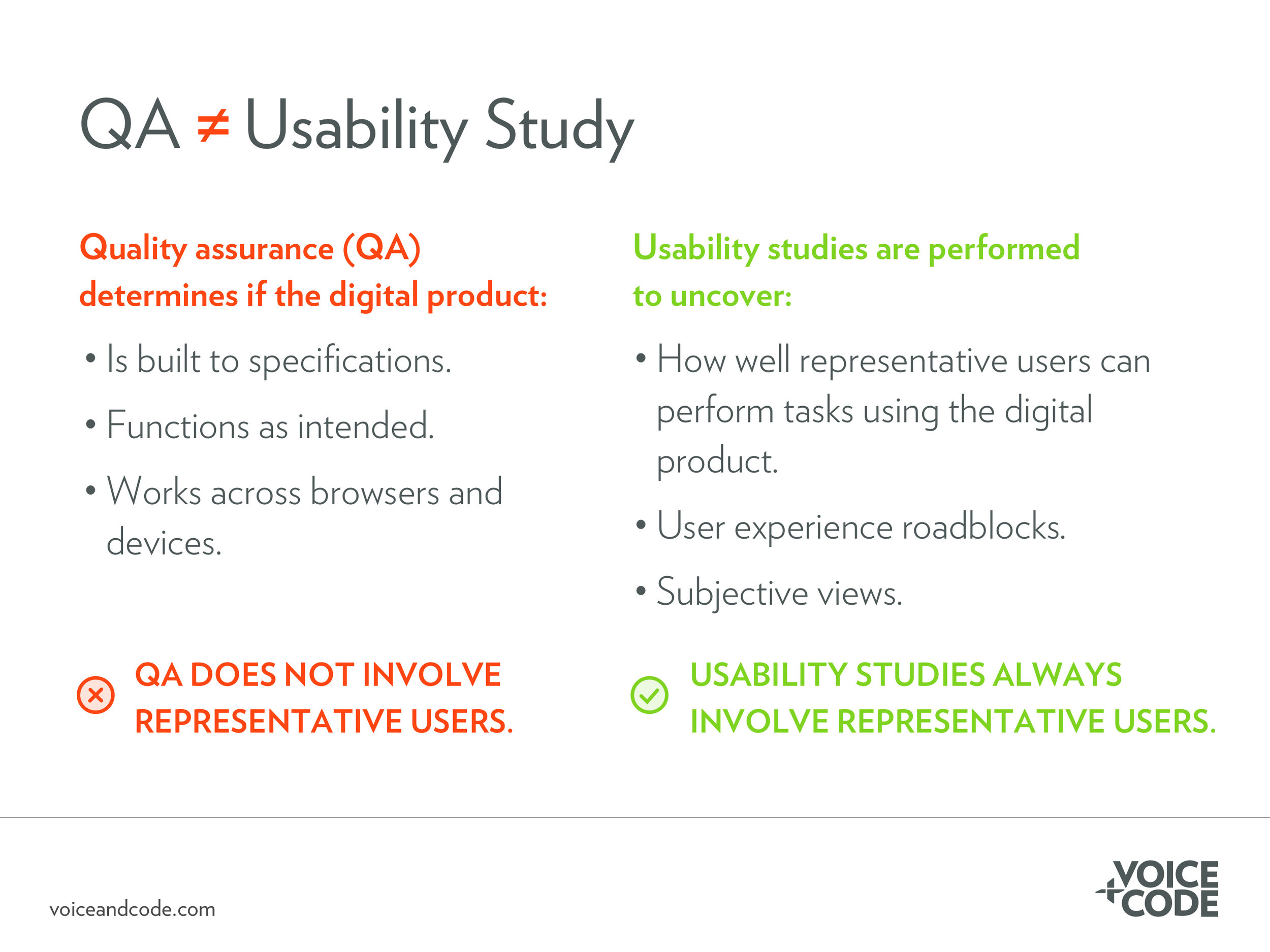UX Best Practices: QA Is Not the Same as a Usability Study
QA (quality assurance) and usability studies are often confused because they are both a process of evaluating digital products. But they are not the same. QA is a process of ensuring the team built the product they intended to build, free of defects. A usability study, although it often uncovers software bugs, helps to determine how well representative users can perform the tasks they set out to perform using the product.
QA determines if a digital product:
Is built according to its specifications.
Functions as intended.
Works across browsers and devices.
QA is typically performed by the team creating the software or website. It never involves the end user. In fact, in a user experience design (UXD) process, the user would have been involved in the design process long before QA was performed.
A usability study, on the other hand, is performed to uncover:
How well representative users can perform tasks using the digital product.
What UX roadblocks users experience using the product.
Users’ subjective views of the product, brand, and their experience using the product.
A usability study can be conducted by an internal or external team, but always involves representative users (the people who will ultimately use the product). By observing users perform a set of realistic tasks, your team can see where users had difficultly moving forward. For example, they didn’t understand a particular button would move them to the next step. Or they couldn’t find an answer to a question. Usability studies help you fix these issues prior to releasing the product.
Want to learn how to conduct a usability study? Our highly interactive in-house How to Conduct a Usability Study workshop how to set up, conduct, and glean insights from a usability study.

